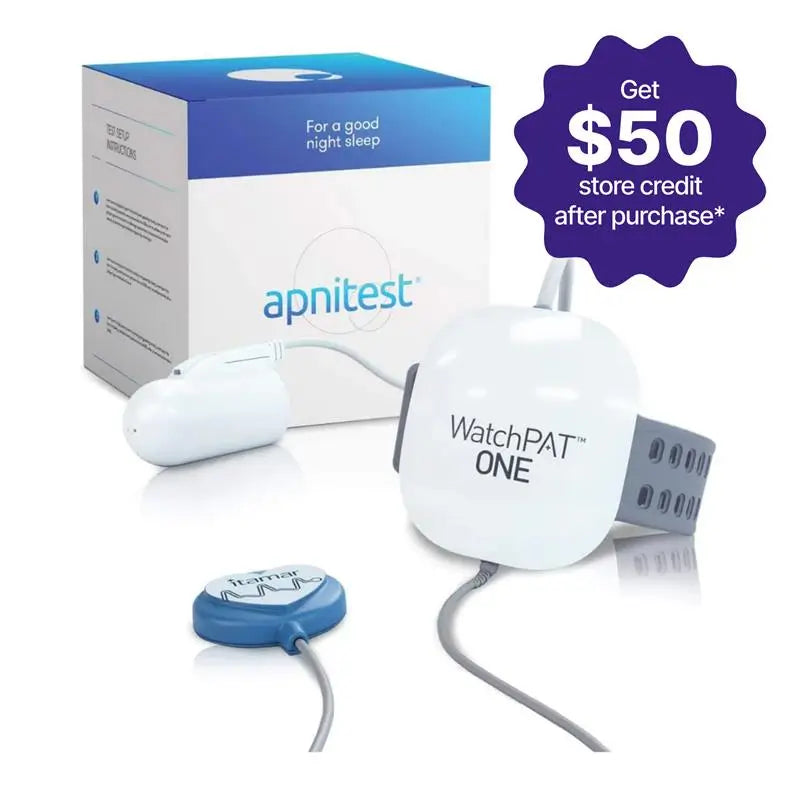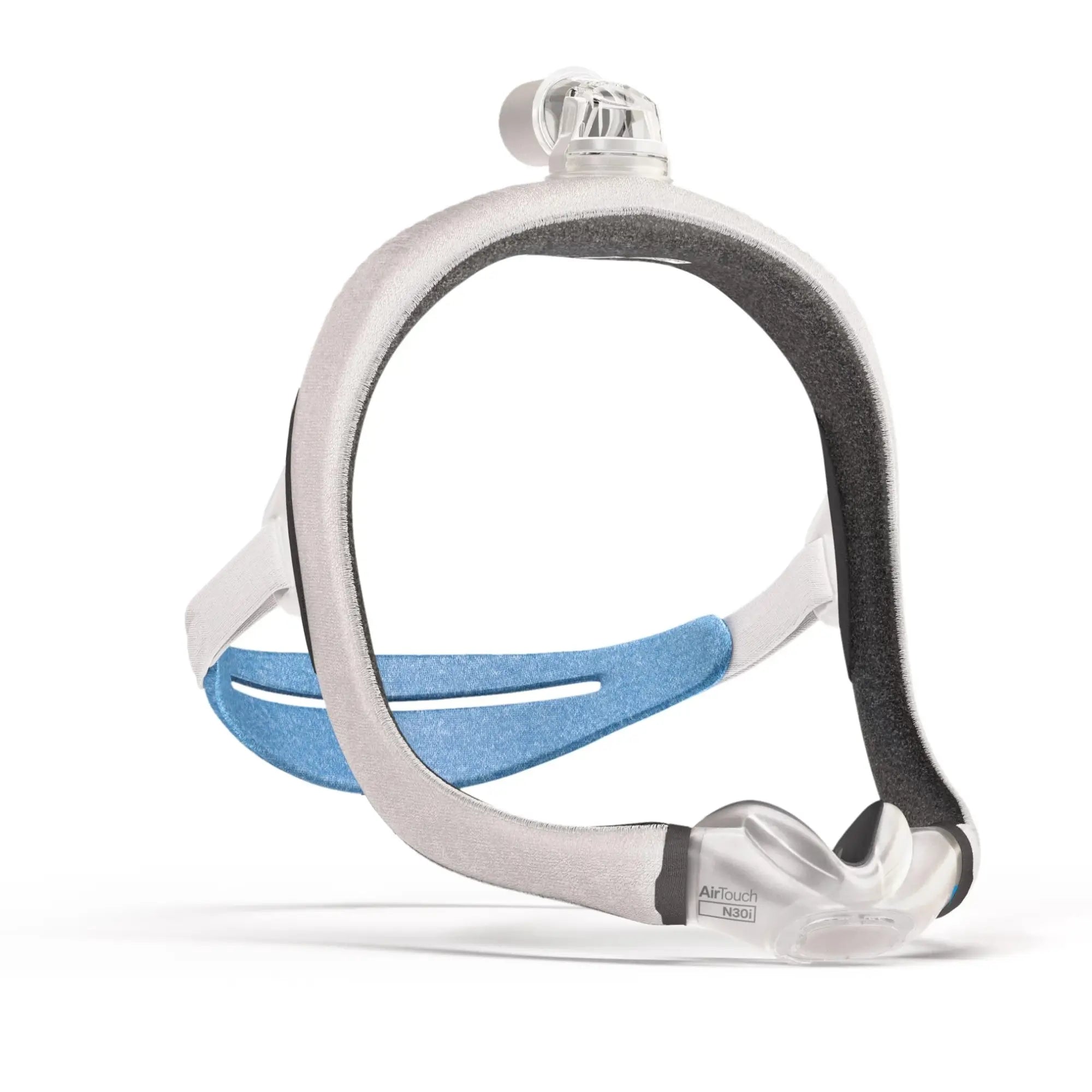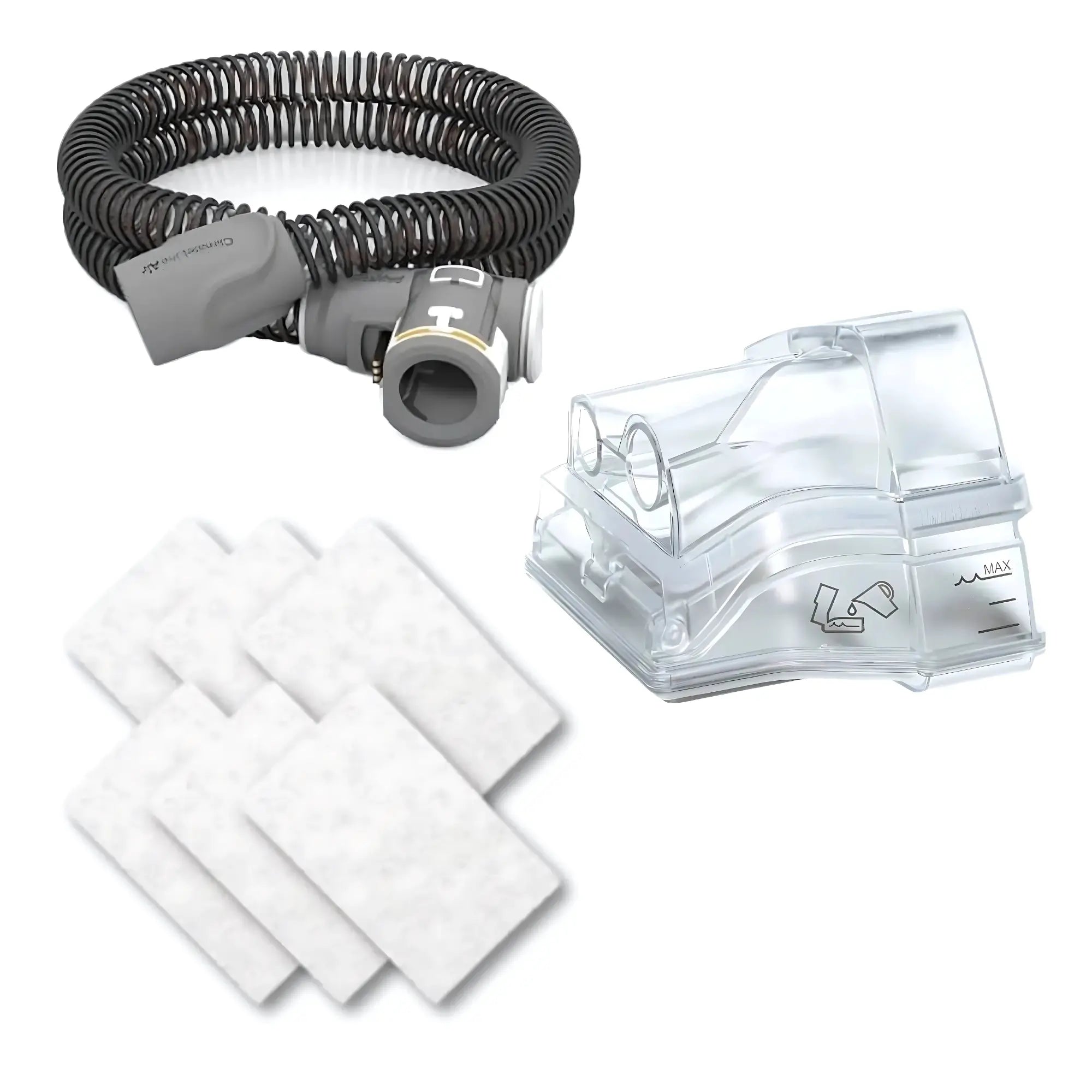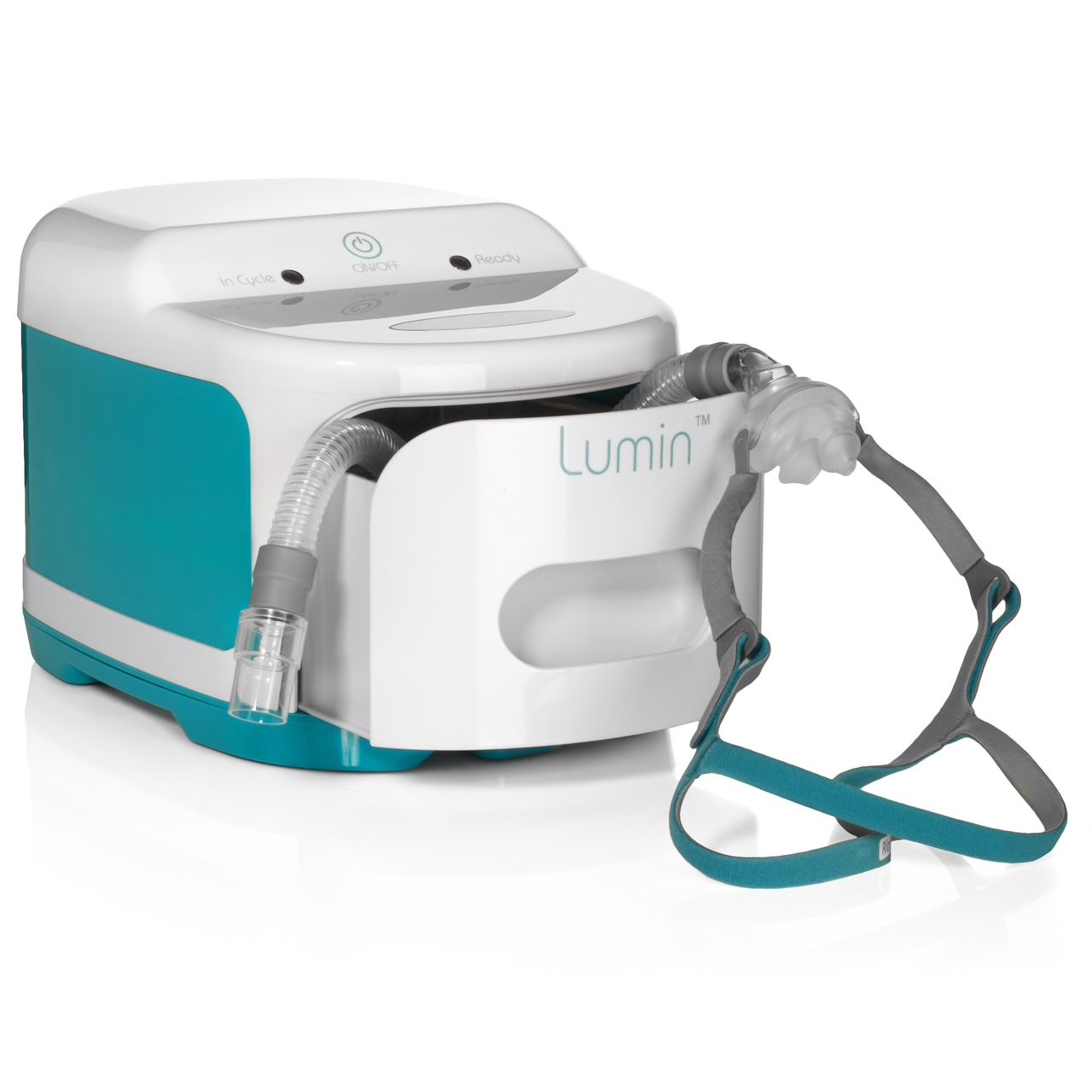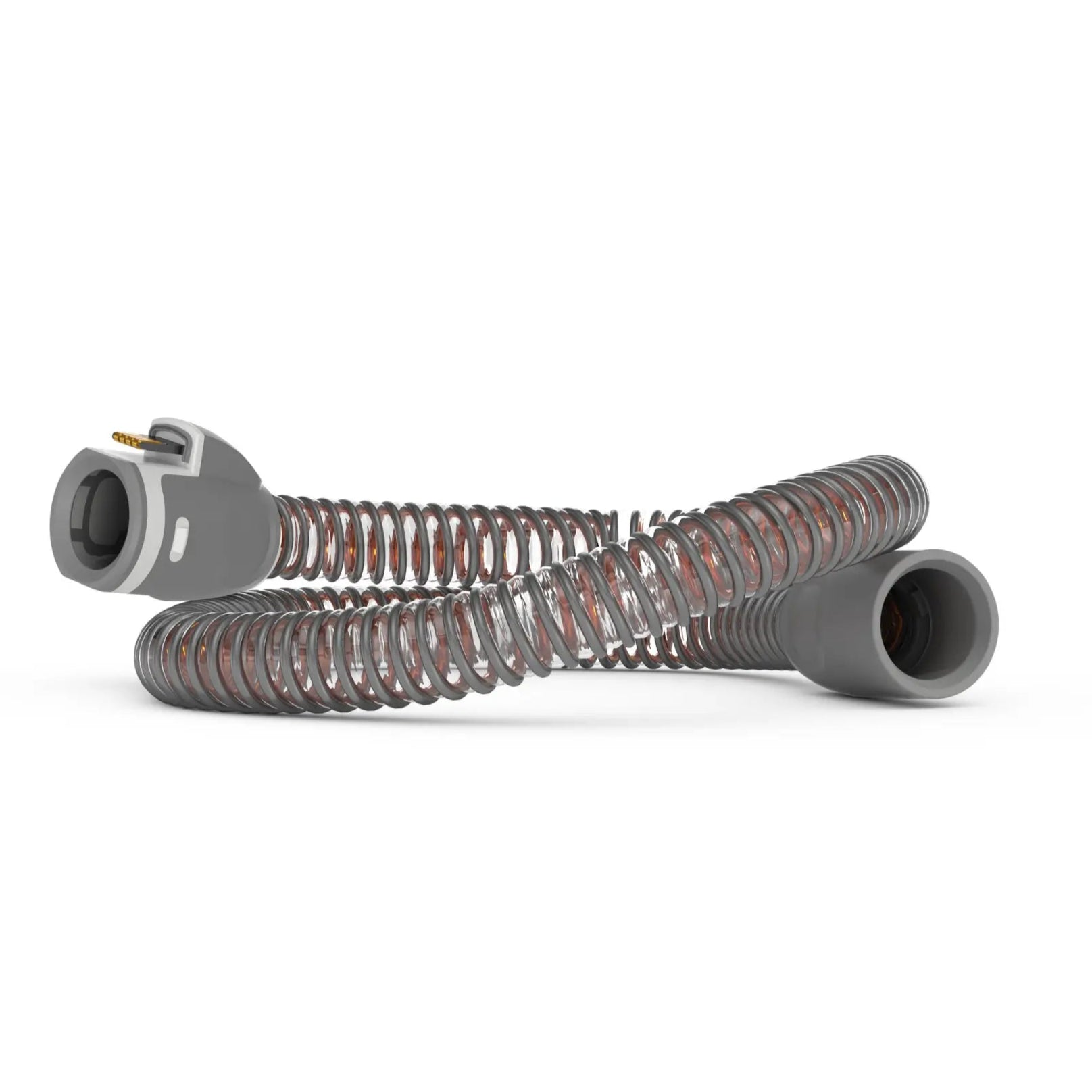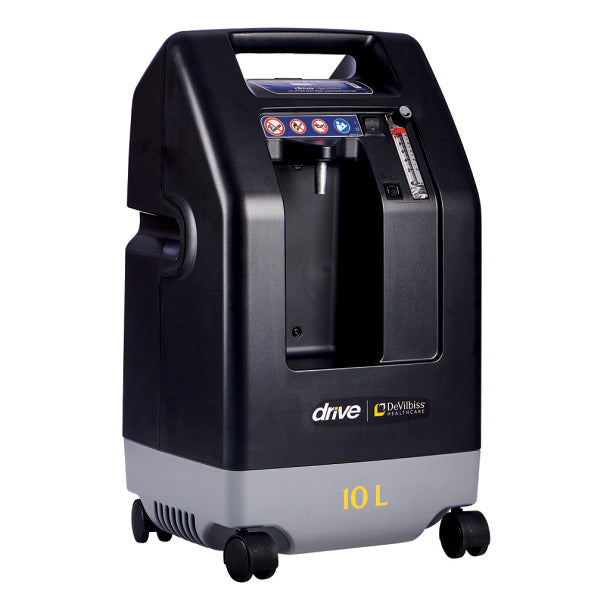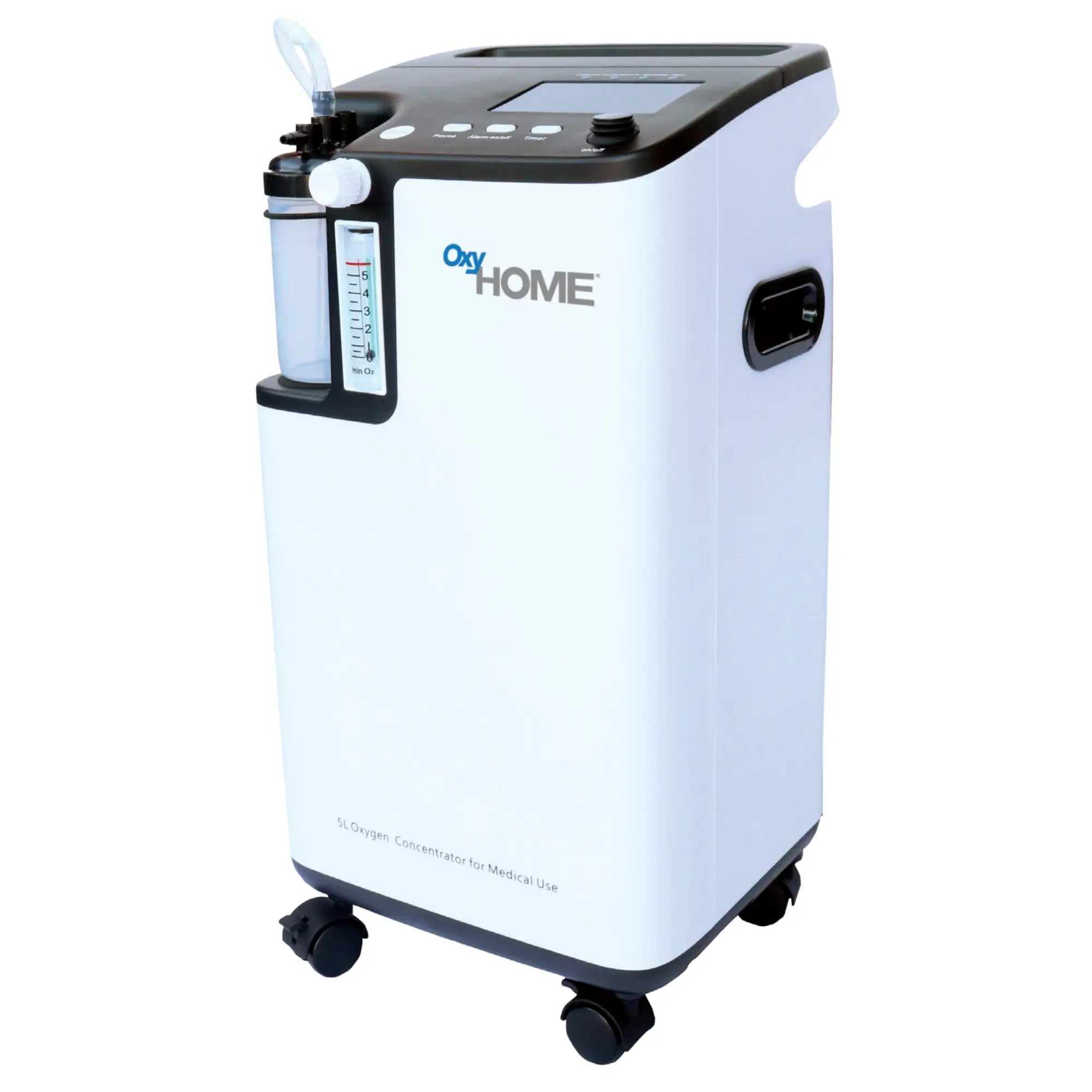CPAP therapy is a game-changer for sleep apnea, but let's face it: sleeping with a mask and tubing? Not always a dream.
Standard pillows often turn this essential therapy into a nightly battle. Masks shift, air leaks happen, and you wake up with red marks or a stiff neck. Sound familiar? That's where CPAP pillows come in to save the night.
These aren't your average pillows. They're designed with cut-outs and contours that play nicely with your CPAP mask and tubing. Think of them as custom-built comfort, reducing pressure and leaks. Plus, they're all about supporting your neck and spine, no matter how you sleep. Side, back, or stomach? There's a CPAP pillow for you.
And it's not just about comfort. Studies back this up. For instance, research from the Sleep Medicine Research Journal shows that body pillows encourage lateral sleeping positions, which is beneficial for sleep apnea management. A study in Frontiers in Medicine also highlights how memory foam CPAP pillows can reduce snoring and boost sleep quality for OSA patients. These pillows aren't just a luxury; they're a smart move for better therapy and better sleep.
What Is a CPAP Pillow & How Does It Work?
CPAP therapy can be life-changing for anyone dealing with sleep apnea. But here’s something most people overlook—your regular pillow might be working against your treatment. But CPAP pillows are designed to support both your head and your mask, helping you get the full benefit of your therapy without the nightly struggle.
A CPAP pillow is a uniquely shaped pillow crafted specifically for individuals using CPAP therapy, ensuring CPAP therapy is as effective and comfortable as possible. It does this by:
- Preventing mask displacement and those annoying air leaks by providing space for your mask and hose.
- Supporting proper neck and spine alignment for good sleep posture.
- Reducing discomfort and pressure on your face caused by CPAP masks.
For added comfort and to reduce red marks, consider using the Best CPAP Mask Liners to Prevent Skin Irritation in 2024.
CPAP Pillows vs. Regular Pillows
CPAP pillows are engineered with specific features that set them apart. Here's a quick comparison:
|
Feature |
Regular Pillow |
CPAP Pillow |
|
Shape |
Standard rectangular |
Contoured with cut-outs or indents |
|
Mask Support |
No space for CPAP mask |
Prevents pressure on the mask & tubing |
|
Spinal Alignment |
Can misalign the neck |
Supports neck & shoulders |
|
Material |
Various may flatten quickly |
Memory foam or specialized firm materials |
|
Airflow & Comfort |
No specific airflow features |
May include cooling gel or airflow channels |
Who Should Use a CPAP Pillow?
CPAP pillows are a must-have for:
- CPAP Users: Essential for anyone using a CPAP, BiPAP, or APAP machine.
- Side Sleepers: Designed to accommodate masks and reduce discomfort while sleeping on your side. Also, check out the Best CPAP Masks For Side Sleepers.
- Mouth Breathers: Helps reduce air leaks caused by improper head positioning.
- People Experiencing Mask Leaks or Discomfort: If you frequently wake up with red marks, soreness, or mask leaks, a CPAP pillow can dramatically improve your therapy.
Key Benefits of CPAP Pillows (Evidence-Backed)
Let’s talk about why CPAP pillows aren’t just another bedtime gimmick. These things come with real, no-joke benefits that can make a big difference in how well you sleep—and how well your therapy works.
Reduces Mask Leaks & Prevents Air Pressure Loss
- Mask leaks are one of the most common complaints among CPAP users.
- CPAP pillows have cutouts or contoured edges that prevent the mask from shifting, reducing leaks that lead to therapy inefficiency.
-
Maintaining a proper seal ensures that air pressure remains consistent, which is crucial for effective CPAP therapy.
Improves Neck & Spine Alignment (Important for CPAP Compliance)
- Traditional pillows can cause poor head positioning, leading to misalignment of the spine and neck discomfort.
- CPAP pillows are ergonomically designed to support proper posture, reducing neck strain.
- Better alignment improves therapy adherence, as discomfort is a leading reason why some patients abandon CPAP use.
Enhances Overall Sleep Quality (Supports Airway Positioning)
- By maintaining an open airway and reducing pressure points, CPAP pillows contribute to deeper, more restful sleep.
- Improved comfort means fewer nighttime awakenings caused by mask shifts or discomfort.
-
Studies show that optimal head positioning can reduce apnea events by keeping the airway stable.
Supports Different Sleep Positions (Side, Back, Stomach)
- CPAP pillows cater to various sleeping positions, making therapy more adaptable.
- Side Sleepers: Cutouts allow the mask to rest without obstruction.
- Back Sleepers: Indented centers cradle the head and maintain alignment.
- Stomach Sleepers: Some designs have thinner lofts to prevent mask displacement. Meanwhile, check out: What Are The Best CPAP Masks for Stomach Sleepers?
- And, if you are wondering, "What is the Best Position to Sleep With Sleep Apnea?" CPAP pillows help with any position.
Reference to Research on Memory Foam Pillow Benefits
- Remember that study in Frontiers in Medicine? Yeah, it's a big deal. Memory foam CPAP pillows can seriously reduce snoring and improve sleep apnea symptoms.
- Folks using them saw their apnea-hypopnea index (AHI) drop and slept way better.
-
Memory foam hugs your head and neck, giving you remarkable support and pressure relief, which helps you keep up with your therapy.
Top 7 CPAP Pillows for Sleep Apnea in 2025
Ready to ditch the mask-shifting, neck-straining nights? These pillows can seriously upgrade your CPAP experience, with each one bringing something special to the table.

-
Infused with cooling gel for temperature regulation.
-
Designed with cutouts to prevent mask pressure.
-
Memory foam construction for contouring support.
-
Machine-washable bamboo cover for freshness.
-
Adjustable height with removable memory foam layers.
-
Pros: Stays cool, super adjustable, comfy, washable.
-
Cons: Might be too firm for some.
-
Best For: Side sleepers, full-face and nasal mask users, and hot sleepers.

-
Pressure-free memory foam for better comfort.
-
Special sloped edges and cutouts for mask accommodation.
-
Concave central area cradles the head and supports the spine.
-
Adjustable loft for personalized height customization.
-
Pros: Ergonomic, adjustable, supportive.
-
Cons: Takes time to adjust to the shape.
-
Best For: Side sleepers, back sleepers, nasal pillow users.

-
Softer memory foam upgrade for added comfort.
-
Features herbal green tea infusion for odor control and relaxation.
-
Three-layer design for height adjustability.
-
Breathable, machine-washable cover made from natural bamboo.
-
Pros: Super soft, relaxing, adjustable, breathable.
-
Cons: Softness preference is subjective.
-
Best For: CPAP users with sensitive skin, side and back sleepers, those needing soft support.
-
Memory foam construction with built-in mask cutouts.
-
Two size options to accommodate different masks.
-
Curved bottom edge for improved shoulder positioning.
-
Comes with two washable pillow covers for hygiene.
-
Pros: Supportive, size options, washable covers.
-
Cons: Non-adjustable loft may not suit all sleep positions or preferences.
-
Best For: Side sleepers, full-face and nasal mask users, users needing extra head and neck support.

-
Cooling gel layer prevents overheating.
-
Universal mask compatibility with specially designed cutouts.
-
Contours for proper neck and spine alignment.
-
Travel-friendly, lightweight design with included travel bag.
-
Pros: Cooling, universal fit, travel-friendly.
-
Cons: Lightweight design may not be supportive enough for some.
-
Best For: Hot sleepers, side sleepers, and frequent travelers.

-
Temperature-regulating cover that adjusts to body heat.
-
Flexible neck zone adapts to different sleep positions.
-
Pressure-free side cutouts to prevent mask leaks.
-
Built-in hose tether to keep tubing secure during sleep.
-
Pros: Flexible, temperature-regulating, hose tether.
-
Cons: Hose tether may be unnecessary for some users.
-
Best For: Combination sleepers, CPAP users who toss and turn, people with neck pain.

-
Ergonomic L-shape supports the entire upper body.
-
Provides full alignment for shoulders, neck, and back.
-
Soft, plush fill for cushioning comfort.
-
Machine-washable microfiber cover for easy maintenance.
-
Proven in the Sleep Medicine Research Journal to extend lateral sleep position and prevent sleep disturbances.
-
Pros: Full-body support, alignment, comfy.
-
Cons: Large size, may not fit all beds.
-
Best For: Side sleepers, CPAP users with positional apnea, people needing full-body support.
How to Choose the Right CPAP Pillow for You
Picking the right CPAP pillow can feel like a mission, but it doesn't have to be. Here's how to nail it:
-
Mask Compatibility: Choosing a Pillow Based on Mask Type
-
Your pillow needs to play nice with your mask. No pressure points or leaks allowed!
-
Nasal Masks: Look for pillows with side cutouts to keep your mask from getting pushed around.
-
Full-Face Masks: You'll want deeper contours or firmer support to prevent shifting.
-
Nasal Pillow Masks: Most CPAP pillows work, but adjustable loft is your friend.
Take this quick quiz to find the right mask for you in under 5 minutes! Answer 6 questions and get your mask recommendation today!
⇒ Find the right mask for you (QUIZ)!
-
Material & Firmness: Memory Foam vs. Cooling Gel vs. Adjustable Loft
-
Memory Foam: Think custom comfort. It molds to your head and neck, keeping your mask stable.
-
Cooling Gel: Hot sleeper? This is your jam. It keeps you cool and cuts down on sweating.
-
Adjustable Loft: Want to tweak the height? Adjustable pillows let you get it just right.
-
Sleep Position: Best CPAP Pillows for Side, Back, and Stomach Sleepers
-
Side Sleepers: Deep cutouts and firm neck support are key.
-
Back Sleepers: Contoured pillows keep your head in a comfy, neutral spot.
-
Stomach Sleepers: Thin or low-loft pillows prevent neck strain.
-
Temperature Regulation: Cooling Gel vs. Breathable Covers
-
Cooling Gel: Keeps you from overheating, especially if you run hot at night.
-
Breathable Covers: Bamboo or cotton covers wick away moisture and keep you cool.
-
Comparison Table
To make your decision easier, here's a handy comparison table of our top CPAP pillow recommendations:
|
Pillow Name |
Best For |
Material |
Mask Compatibility |
Temprature Regulation |
|
Best In Rest Memory Foam CPAP Pillow |
Side & Back Sleepers |
Memory Foam |
Full-Face, Nasal |
Cooling Gel |
|
Snugell Memory Foam Ergonomic CPAP Pillow |
Side Sleepers |
Soft Memory Foam |
Nasal, Nasal Pillow |
Breathable Cover |
|
CPAP Hero CPAP Pillow |
Combination Sleepers |
Adaptive Memory Foam |
Full-Face, Nasal |
Cooling Layer |
|
CoolPAP Pillow Contour |
Hot Sleepers |
Cooling Gel & Memory Foam |
All Masks |
Cool Gel Layer |
|
L-Shaped Body Pillow Contour |
Side Sleepers & Body Support |
Polyester Fill |
All Masks |
Breathable Fabric |
Final Thoughts
And there you have it—the real scoop on CPAP pillows. Traditional pillows? They can be a nightmare when you're trying to get comfortable with your CPAP gear. From pesky mask leaks to waking up with a stiff neck, they just don’t do the trick. But CPAP pillows? They’re purpose-built to tackle those exact issues.
These aren't just comfy; they're a smart investment for better therapy and better sleep. We're talking about fewer mask leaks, better neck and spine alignment, and overall improved sleep quality. Plus, with options for every sleep position and features like cooling gel and adjustable loft, there's a CPAP pillow out there for everyone.
Ready to ditch the nightly struggles and wake up feeling refreshed? Explore our top 7 CPAP pillow picks and find the perfect one for you! Click here to shop now and transform your CPAP therapy.
FAQs
What is a CPAP pillow?
A CPAP pillow is a specially designed pillow that accommodates the needs of CPAP users. Unlike regular pillows, it features cutouts and contours to minimize mask pressure and leaks, while providing better neck and spine alignment.
Do CPAP pillows really work?
Yes, CPAP pillows really work! They're designed to address common issues like mask leaks, discomfort, and poor sleep posture, all of which can disrupt CPAP therapy. By providing better support and accommodating mask and tubing, they enhance therapy effectiveness and improve sleep quality.
Why do I need a CPAP pillow?
You need a CPAP pillow to ensure your CPAP therapy is as comfortable and effective as possible. Regular pillows can cause mask leaks, pressure points, and neck pain, leading to poor compliance. A CPAP pillow fixes these issues, helping you get the most out of your therapy.
What are the benefits of a CPAP pillow?
The benefits of a CPAP pillow include reduced mask leaks, improved neck and spine alignment, enhanced overall sleep quality, and support for various sleep positions. They help maintain consistent air pressure and minimize discomfort, leading to better therapy adherence.
How do CPAP pillows help with sleep apnea?
CPAP pillows help with sleep apnea by maintaining proper mask positioning and reducing leaks, ensuring you receive consistent air pressure throughout the night. They also support proper head and neck alignment, which can help keep your airway open and reduce apnea events.
What is the best CPAP pillow for side sleepers?
The best CPAP pillow for side sleepers typically features deep side cutouts to accommodate the mask and firm neck support to maintain alignment. Look for pillows like the Snugell Memory Foam Ergonomic CPAP Pillow, which are specifically designed for side sleeping.
What is the best CPAP pillow for a full face mask?
For full-face mask users, a pillow with deeper contours and firmer support is essential to prevent mask shifting. The Best In Rest Memory Foam CPAP Pillow is a great option, as it provides the necessary support and cutouts.
What is the most comfortable CPAP pillow?
Comfort is subjective, but memory foam pillows with cooling gel or breathable covers tend to be highly rated. The Best In Rest CPAP Pillow With Improved Softer Memory Foam is a great comfort option.
What CPAP pillow helps reduce mask leaks?
Pillows with well-designed cutouts and contours, like the Hero CPAP Pillow, help reduce mask leaks by minimizing mask movement during sleep.
What CPAP pillow helps with neck pain?
Pillows that provide proper neck and spine alignment, such as the CPAP Cool Flex Pillow Contour, can help alleviate neck pain. These pillows are designed to support the neck and prevent strain.
What is the best memory foam CPAP pillow?
The Best In Rest Memory Foam CPAP Pillow with Cooling Gel is a top choice for memory foam CPAP pillows due to its contouring support, cooling features, and adjustability.
What is a cooling CPAP pillow?
A cooling CPAP pillow, like the CoolPAP Pillow Contour, incorporates cooling gel layers or breathable materials to prevent overheating and sweating during sleep. This is especially beneficial for hot sleepers.
CPAP pillow vs regular pillow?
CPAP pillows are specifically designed to accommodate CPAP masks and tubing, while regular pillows are not. CPAP pillows offer features like cutouts and contours to prevent mask leaks and improve comfort, which regular pillows lack.
How do I choose the right CPAP pillow?
To choose the right CPAP pillow, consider your mask type, sleeping position, material preferences, and any specific needs like temperature regulation or neck pain relief.
How do I use a CPAP pillow?
Use a CPAP pillow by positioning it so that the cutouts align with your mask and tubing. Ensure your head and neck are properly supported, and adjust the pillow's loft if needed.
How do I clean a CPAP pillow?
Most CPAP pillows come with machine-washable covers. Clean your mask and tubing daily, and wash your pillow cover and pillow as needed. Always check the manufacturer's instructions for specific CPAP cleaning guidelines.
Can a CPAP pillow help with dry mouth?
While a CPAP pillow primarily focuses on mask accommodation and comfort, it can indirectly help with dry mouth by improving mask seal and reducing air leaks, which can exacerbate dryness. For more information, check out our article: CPAP Dry Mouth: What's The Solution?
Can a CPAP pillow help with red marks from my mask?
Yes, a CPAP pillow can help reduce red marks by minimizing mask pressure and movement. The cutouts and contours prevent the mask from pressing against your face, reducing irritation.
How does a CPAP pillow improve sleep quality?
A CPAP pillow improves sleep quality by providing better comfort and support, reducing mask leaks and pressure points, and promoting proper head and neck alignment. This leads to fewer sleep disruptions and deeper, more restful sleep.
Can a pillow help with sleep apnea symptoms?
Yes, a CPAP pillow can help alleviate sleep apnea symptoms by ensuring consistent air pressure and improving sleep quality. It works in conjunction with your CPAP machine to enhance therapy effectiveness.
How does pillow position affect sleep apnea?
Pillow position can significantly impact sleep apnea. Proper alignment and support can help keep your airway open, reducing apnea events. CPAP pillows are designed to optimize pillow position for CPAP users.
Does memory foam help with sleep apnea?
Yes, memory foam helps with sleep apnea by providing contouring support and maintaining mask stability. It molds to your head and neck, reducing pressure points and improving comfort.
Are body pillows good for sleep apnea?
Yes, body pillows, especially L-shaped ones, can be good for sleep apnea, particularly for side sleepers. They help maintain lateral sleeping positions, which can reduce apnea events.


